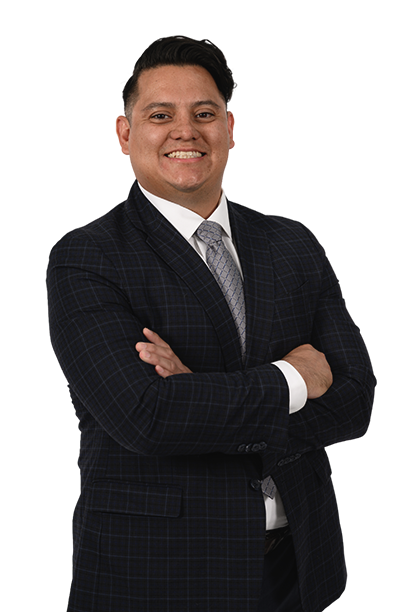We Get You the HIGHEST Compensation for Your Injuries
BRAFF PERSONAL INJURY LAW FIRM
- Diverse Cases Handled Expertly
- “No Win, No Fee” Method
- 24/7 Availability
- FREE Initial Consultation
- Dedicated Case Managers
- Local Presence, Global Perspective

Your Expert Personal Injury Lawyers in Arcadia, Brentwood, Hayward and Thousand Oaks
Justice and Compensation for Your Injuries or You Don’t Pay
We've Helped Over 15,000 Clients
$1.1 M
Motor Vehicle Accident
$975 K
brain Injury
$750 K
Motor Vehicle Accident
$360 K
Motorcycle Accident
Personal Injury Law Practice Areas
What Our Clients Say
Frequently Asked Questions: Braff Law Firm Answers

Our expert personal injury lawyers in Arcadia, Brentwood, Hayward and Thousand Oaks are pleased to provide detailed answers to some of your most frequent questions. The following FAQ Section offers valuable information concerning the broad spectrum of personal injury claims we handle. It also explains how our skilled personal injury lawyers in Arcadia, Brentwood, Hayward and Thousand Oaks support you throughout your journey to receive the highest compensation for your injuries. Reach out and phone our powerful personal injury lawyers in Arcadia, Brentwood, Hayward and Thousand Oaks or complete our online form now to schedule your FREE injury case review.
Yes. At Braff Law, we use our powerful expertise, sharp negotiation skills, and vast courtroom experience to fight for injury victims successfully. Our goal is to make sure our clients receive the MAXIMUM compensation they should receive. Our personal injury lawyers are resolute when it comes to seeking justice: we don’t give up when faced with large insurance companies or opposing lawyers. We skilfully use our expert negotiation skills to strongly represent our clients’ rights and secure settlements which accurately reflect the full impact of their injuries.
At Braff Law, our highly skilled personal injury lawyers in Arcadia, Brentwood, Hayward and Thousand Oaks recognize that injuries can have long-lasting effects – not only physically, but also emotionally and financially. We appreciate how every dollar matters, so we are dedicated to fighting for every dollar our clients deserve.
At Braff Law, our contingency fee method is a convenient payment arrangement we offer, such that you only pay if we win your injury case. This means you can pursue a personal injury claim without any upfront legal fees. We understand how the financial burdens of an injury can be overwhelming, but we don’t want this to hinder you from seeking the full justice and compensation you deserve.
By choosing to hire Braff Law, you’re not only getting expert, dedicated legal representation; you’re getting a team of skilled California personal injury lawyers who truly care about your well-being. Don’t hesitate to reach out to our expert personal injury lawyers in Arcadia, Brentwood, Hayward and Thousand Oaks now for your FREE consultation – let us begin fighting for your rights today.
Beginning a legal journey to obtain justice and compensation can be intimidating, but with Braff Law’s FREE case review, injury victims get an early advantage. This consultation does not require you to hire us, and it is the best first step toward understanding all the details of your situation. Your FREE case review includes:
Insightful Analysis
Our expert personal injury lawyers in Arcadia, Brentwood, Hayward or Thousand Oaks carefully examine all the details of each potential claim to give you the most informed viewpoint.
Strength Assessment
We determine the strengths of your injury case, providing you with a clear understanding of where you stand legally.
Strategic Planning
You’ll also receive advice on possible actions to take based on your own specific circumstances.
Our FREE case review is an essential service we provide for creating the strongest case. At Braff Law, we make sure every client understands all the intricacies of their claim, which boosts their confidence moving forward. By choosing to hire our personal injury lawyers in Arcadia, Brentwood, Hayward and Thousand Oaks, you’ll have access to skilled legal professionals, dedicated to protecting your rights and helping you receive maximum compensation.
If you’ve been injured due to the negligence of others, you need a personal injury lawyer in Arcadia, Brentwood, Hayward or Thousand Oaks who’s not afraid to take on insurance companies and fight for your rights. At Braff Law, we have a highly successful team of expert personal injury lawyers in Arcadia, Brentwood, Hayward and Thousand Oaks who refuse to back down from this challenge. We understand all the tactics insurance companies use to minimize payouts, so we will work tirelessly to ensure you receive the maximum compensation you deserve. Don’t let the insurance company take advantage of you – contact Braff Law today for your FREE injury case review.
Personal Injury Lawyers in Arcadia, Brentwood, Hayward and Thousand Oaks
Braff Law’s expert personal injury lawyers in Arcadia, Brentwood, Hayward and Thousand Oaks are the reason for our powerful and successful track record. We have a relentless commitment to fight successfully for the rights of personal injury victims in all our communities. Our highly skilled personal injury lawyers in Arcadia, Brentwood, Hayward and Thousand Oaks are ready to guide you throughout every stage of your legal journey and secure you the maximum compensation you deserve. Call our expert personal injury lawyers in Arcadia, Brentwood, Hayward and Thousand Oaks or fill in our online form now for your FREE personal injury case consultation.
To succeed at personal injury cases, collecting solid evidence is crucial. At Braff Law, our personal injury lawyers in Arcadia, Brentwood, Hayward and Thousand Oaks understand that gathering the best evidence is key for proving fault and demonstrating the full extent of the harm you’ve suffered. We sincerely believe that legal victory lies in paying attention to every detail such as:
Accident Reports
These documents can provide important information about how you became injured, helping our skilled personal injury lawyers in Arcadia, Brentwood, Hayward and Thousand Oaks establish who was at fault.
Medical Records
These records are essential for proving the type (and severity) of your injuries caused by the accident. They serve as solid evidence of your physical pain.
Witness Testimonies
Witnesses who saw your accident take place can support your version of events, making your injury claim more credible.
By remaining thorough in our evidence collection, our exceptional personal injury lawyers in Arcadia, Brentwood, Hayward and Thousand Oaks build the most powerful case on your behalf, leaving no doubt as to who should be held responsible for your suffering.
Braff Law Produces the Most POWERFUL Legal Cases for Injury Victims

Our Consultation Offices in Arcadia, Brentwood, Hayward and Thousand Oaks
Never try to navigate through the realm of personal injury law yourself – it’s fraught with challenges and can become a very risky ordeal. This is why your successful personal injury lawyers in Arcadia, Brentwood, Hayward and Thousand Oaks at Braff Law are always here on your side. The staff at our conveniently located California personal injury law offices are ready to attend to all your legal needs, so visit us now for a FREE review of your injury case. We believe in honesty and transparency, and we’re committed to helping you make the smartest decisions throughout your injury case. Call the Arcadia, Brentwood, Hayward or Thousand Oaks consultation offices of Braff Law, or fill in our online form right now and take the first step toward getting the full compensation you deserve.

